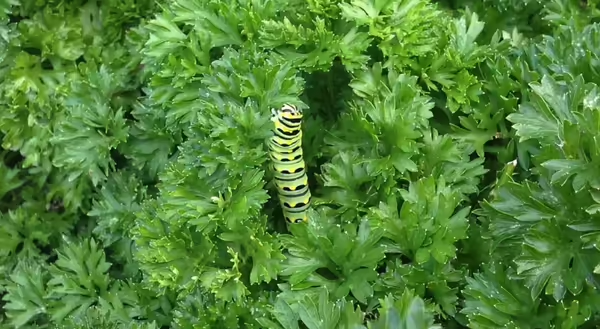
Herbs have been touted by gardeners as some of the easiest and most rewarding plants to grow in the garden. Did you know that some herbs grow best in the cooler season of spring?
Cilantro and parsley can be planted by seed or transplants now. Cilantro and Parsley should be planted in rich but well-drained soil, with full sun or partial sun (afternoon sun). It is best not to over fertilize herbs; doing so may dull the taste. Harvest no more than half of the plant and remove leaves to base of plant ensuring to not leave stalks behind.
Cilantro seeds may need to be soaked for 3 to 4 days before planting to break open the seed coat. The seed should be planted about an inch deep and 6 inches apart.
Chuck Voigt, retired research specialist from the University of Illinois, suggested ‘Leaf,’ ‘Long-Standing,’ ‘Slo-Bolt,’ ‘Calypso,’ and ‘Santos’ for their delay in bolting and staying vegetative longer. He stated that using these cultivars might extend harvest of cilantro leaves an extra two weeks. When the temperatures heat up the cilantro plant will try to flower. The flowers are amazing for pollinators but spread may be inevitable if allowed to seed.
Parsley should be planted about 1/8-inch-deep and plants should be spaced 10 inches apart, in full sun to part shade. They can be slow to germinate, so be patient and keep watering to ensure they do not dry out. Curly parsley grows shorter. Flat leaf parsley has a better taste. This plant is host to the beautiful eastern black swallowtail larva. These caterpillars eat the leaves and are a light green color with black stripes and yellow dots. Parsley makes a great ground cover, border or addition to a container.
Kids in the Garden
Got kiddos that loves salsa? Plant a salsa garden this summer with your cilantro and parsley, add peppers, onions and tomatoes for salsa; add basil to pair with your tomatoes for a fresh Italian treat from the garden. Plant other herbs to play a sensory match with the kids using smell, touch, taste, and sight to identify herbs and talk about the foods they flavor. Come summer, check out the black swallowtail larvae feasting on the parsley. When disturbed, the caterpillars send out a vibrant orange and forked scent gland from the top of their head, known as the osmetaria. It is meant to ward off predators with its foul smell!